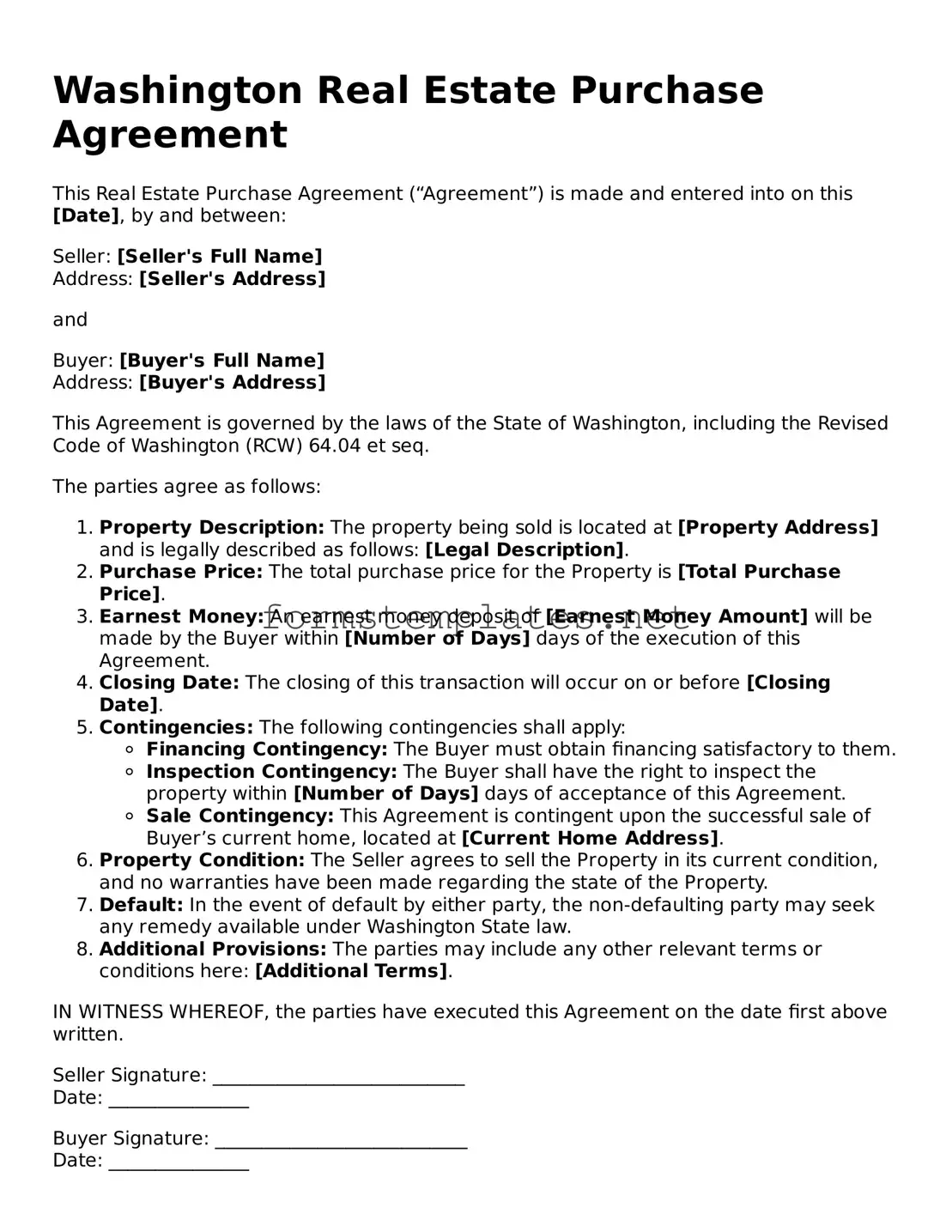What is a Washington Real Estate Purchase Agreement?
The Washington Real Estate Purchase Agreement is a legally binding document that outlines the terms and conditions of a real estate transaction. This agreement is crucial for both buyers and sellers as it details the obligations of each party, the purchase price, and other essential terms related to the sale of property in Washington State.
Why is a Real Estate Purchase Agreement important?
This agreement protects both parties involved in the transaction. It provides clarity on the expectations and responsibilities of each party, reducing the risk of disputes. Without a written agreement, misunderstandings can easily arise, leading to potential legal issues down the road.
What key elements should be included in the agreement?
A comprehensive Real Estate Purchase Agreement should include the following elements:
-
Property Description:
A detailed description of the property being sold, including the address and any relevant legal descriptions.
-
Purchase Price:
The agreed-upon price for the property.
-
Financing Terms:
Details regarding how the buyer intends to finance the purchase.
-
Contingencies:
Conditions that must be met for the agreement to be valid, such as home inspections or financing approval.
-
Closing Date:
The date on which the sale will be finalized.
Can I use a standard template for the agreement?
While you can find standard templates online, it is essential to customize the agreement to fit your specific situation. Each real estate transaction is unique, and a generic template may not cover all necessary details or contingencies relevant to your deal.
What happens if one party breaches the agreement?
If one party fails to fulfill their obligations as outlined in the agreement, it is considered a breach. The non-breaching party may have several options, including:
-
Seeking damages for any losses incurred.
-
Requesting specific performance, which means asking the court to enforce the agreement.
-
Terminating the agreement and seeking other opportunities.
Is a Real Estate Purchase Agreement legally binding?
Yes, once both parties sign the agreement, it becomes legally binding. This means that both the buyer and the seller are obligated to adhere to the terms outlined in the document. It is crucial to read and understand all terms before signing.
Do I need a lawyer to draft or review the agreement?
While it is not legally required to have a lawyer, it is highly recommended. A legal professional can ensure that the agreement is thorough, complies with state laws, and protects your interests. This is particularly important if you are unfamiliar with real estate transactions.
What are contingencies, and why are they important?
Contingencies are conditions that must be satisfied for the sale to proceed. They are crucial because they protect the buyer's interests. Common contingencies include:
-
Home inspection contingency, allowing the buyer to back out if significant issues are found.
-
Financing contingency, ensuring the buyer can secure a mortgage.
-
Appraisal contingency, which protects the buyer if the property appraises for less than the purchase price.
How can I ensure the agreement is fair?
To ensure fairness, both parties should openly communicate their needs and expectations. It is also wise to consult with a real estate agent or attorney who can provide insights into market standards and help negotiate terms that are equitable for both sides.
What should I do after signing the agreement?
After signing, both parties should keep a copy of the agreement for their records. It is also essential to start fulfilling any contingencies and prepare for the closing process. This may include scheduling inspections, securing financing, and gathering necessary documents.
